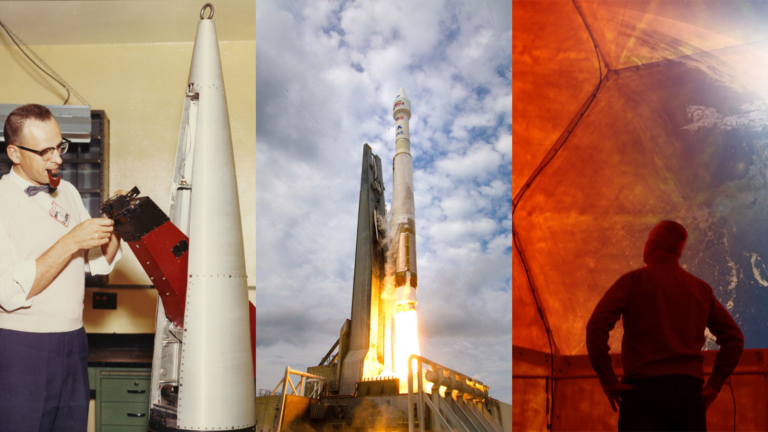CU Boulder’s Laboratory for Atmospheric and Space Physics continues to build a legacy of expanding the frontiers of scientific knowledge.

Space research first began at CU Boulder back in 1948, when an Air Force research laboratory contracted with the university’s physics department to study the Sun by launching instruments mounted on surplus World War II rockets. To meet this challenge, William Pietenpol, the physics department chair, assembled a team of scientists and engineers, founding what would become CU’s oldest and highest-budget research institute: the Laboratory for Atmospheric and Space Physics (LASP).
Fast forward to the present, and LASP, which has grown to about 700 employees, has just begun celebrating its 75th anniversary.
In the intervening decades, the laboratory has become the only academic research institute in the world to have sent scientific instruments to all eight planets in the solar system, plus Pluto, the Sun, and a host of moons. LASP is also at the forefront of solar and space physics research, climate and space-weather monitoring, and the search for evidence of habitable worlds.
“Some things just get better with age,” LASP Director Daniel Baker said. “We’ve always concentrated on expanding the frontiers of scientific knowledge, and that focus has kept us at the cutting edge of space science for three-quarters of a century.”
Among university research institutions, LASP is unusual in that it engages in the full cycle of space exploration. “The ability to blend space science with hardware design, development, and implementation, as well as mission operations, data management, and skilled administration, is increasingly rare, and it really sets LASP apart,” said Baker. “We’re one of a small set of academic space research centers able to meet the increasingly stringent requirements of space exploration.”
A crucial research hub
LASP is one of CU Boulder’s 12 research institutes, which foster environments in which researchers, faculty, and students can seamlessly collaborate with government and industry partners. As a result, LASP has helped position CU Boulder as a research hub for the state’s rapidly growing aerospace and defense economy, the largest per capita in the nation. LASP’s nearly $1 billion portfolio of research and engineering programs includes partnerships with NASA, NOAA, NSF, NIST, and the NSO, as well as extensive collaboration with other university affiliates and international partners, including the United Arab Emirates.
LASP also employs more than 175 CU Boulder graduate and undergraduate students as well as two dozen tenure-track faculty who are co-rostered in five academic departments. These faculty and students are crucial to LASP’s future. “We’re deeply committed to working with our colleagues at CU Boulder to inspire and educate the next generation of space explorers so that we can continue our proud tradition of innovation,” Baker said.
Transforming our understanding of the cosmos
One of LASP’s biggest strengths is that its expertise spans many different areas of space science, said Frank Eparvier, LASP’s associate director for science. This allows for innovative, cross-divisional research, such as the Total and Spectral Solar Irradiance Sensor (TSIS-1), a NASA Earth Science Division mission on the International Space Station that spans both Earth and solar science.
LASP is also renowned for developing spacecraft and instruments for interplanetary missions and helping to disseminate information about space weather that is crucial to protecting America’s telecommunication, GPS navigation, and satellite-tracking capabilities.
When thinking about the future, Eparvier is confident that the institute will remain a center of innovation. “By continuing to push the limits of what’s possible, LASP will build on our remarkable history and, in the process, continue to transform our understanding of the cosmos to the benefit of humanity and the planet.”
– Written by Terri Cook, LASP’s Head of Communications
Founded a decade before NASA, the Laboratory for Atmospheric and Space Physics at the University of Colorado Boulder is on a mission to transform human understanding of the cosmos by pioneering new technologies and approaches to space science. LASP is the only academic research institute in the world to have sent instruments to every planet in our solar system.



